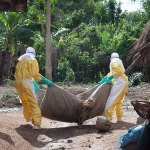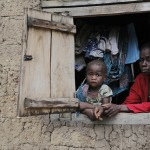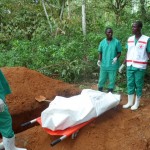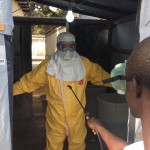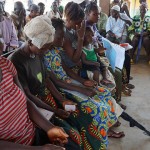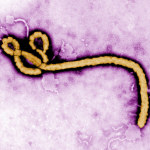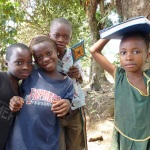Background: A major challenge to outbreak control lies in early detection of viral haemorrhagic fevers (VHFs) in local community contexts during the critical initial stages of an epidemic, when risk of spreading is its highest (“the first mile”). This paper documents how a major Ebola outbreak control effort in central Uganda in 2012 was experienced from the perspective of the community. It asks to what extent the community became a resource for early detection, and identifies problems encountered with community health worker and social mobilization strategies.
Continue reading →
Despite more than 25 documented outbreaks of Ebola since 1976, our understanding of the disease is limited, in particular the social, political, ecological, and economic forces that promote (or limit) its spread. In the following study, we seek to provide new ways of understanding the 2013-2015 Ebola pandemic. We use the term, ‘pandemic,’ instead of ‘epidemic,’ so as not to elide the global forces that shape every localized outbreak of infectious disease. By situating life histories via a biosocial approach, the forces promoting or retarding
Continue reading →
Ebola Virus Disease (EVD) home deaths occur as the result of infected persons not being detected early and sent to Ebola Treatment Units (ETU) where they can access care and have an improved chance of survival. From a public health standpoint, EVD deaths should not occur at home. Individuals suspected of being infected with EVD should be identified through case investigations or contact tracing efforts and then referred to an ETU, thus decreasing their risk of dying as well as minimising the risk of exposing
Continue reading →
In a recent interesting contribution to this platform, Paul Richards rightly questioned the mainstream perception that funerals per se are source of contamination in countries affected by ebola. The author argues that funerals are phenomena which are extremely interrelated to other different aspects of social life, like the overall care of sickness, the concept of authority, and the logic of parenthood. Yet, his brief paper has another value: by stressing the complexity of this social phenomenon, it tunes down the journalistic emphasis that in past
Continue reading →
The scale of West Africa’s Ebola epidemic has been attributed to the weak health systems of affected countries, their lack of resources, the mobility of communities and their inexperience in dealing with Ebola. This briefing for African Affairs argues that these explanations lack important context. The briefing examines responses to the outbreak and offers a different set of explanations, rooted in the history of the region and the political economy of global health and development. To move past technical discussions of “weak” health systems, it
Continue reading →
Christopher J. M. Whitty and colleagues explain why the United Kingdom is funding many small community centres to isolate suspected cases in Sierra Leone. The UK government is leading the international response to Ebola in Sierra Leone, providing technical, financial and logistical help. This article sets out the scientific basis for the UK government’s strategy to assist Sierra Leone’s government to reduce transmission. In addition to substantially scaling up conventional capacities at hospitals, the UK plan to help to build and support community isolation centres where
Continue reading →
This article discusses the role of rumors in everyday Acholi life in war-torn northern Uganda. These rumors concern various health threats such as HIV and Ebola. The rumors are closely associated with the forces of domination that are alleged to destroy female sexuality and women’s reproductive health and, by extension, Acholi humanity. Moreover, the rumors are stories that say something profound about lived entrapments and political asymmetries in Uganda and beyond.
The current outbreak of Ebola Virus Disease in Upper West Africa is the largest ever recorded. Molecular evidence suggests spread has been almost exclusively through human-to-human contact. Social factors are thus clearly important to understand the epidemic and ways in which it might be stopped, but these factors have so far been little analyzed. The present paper focuses on Sierra Leone, and provides data on the least understood part of the epidemic – the largely undocumented spread of Ebola in rural areas. Various forms of
Continue reading →
Haemorrhagic fevers have, par excellence, captured popular and media imagination as deadly diseases to come ‘out of Africa’. Associated with wildlife vectors in forested environments, viral haemorrhagic fevers such as Ebola, Marburg and lassa fever figure high in current concern about so-called ‘emerging infectious diseases’, their hotspots of origin and threat of global spread. Outbreak narratives have justified rapid and sometimes draconian international policy responses and control measures. Yet there is a variety of other ways of framing haemorrhagic fevers. There present different views concerning
Continue reading →
